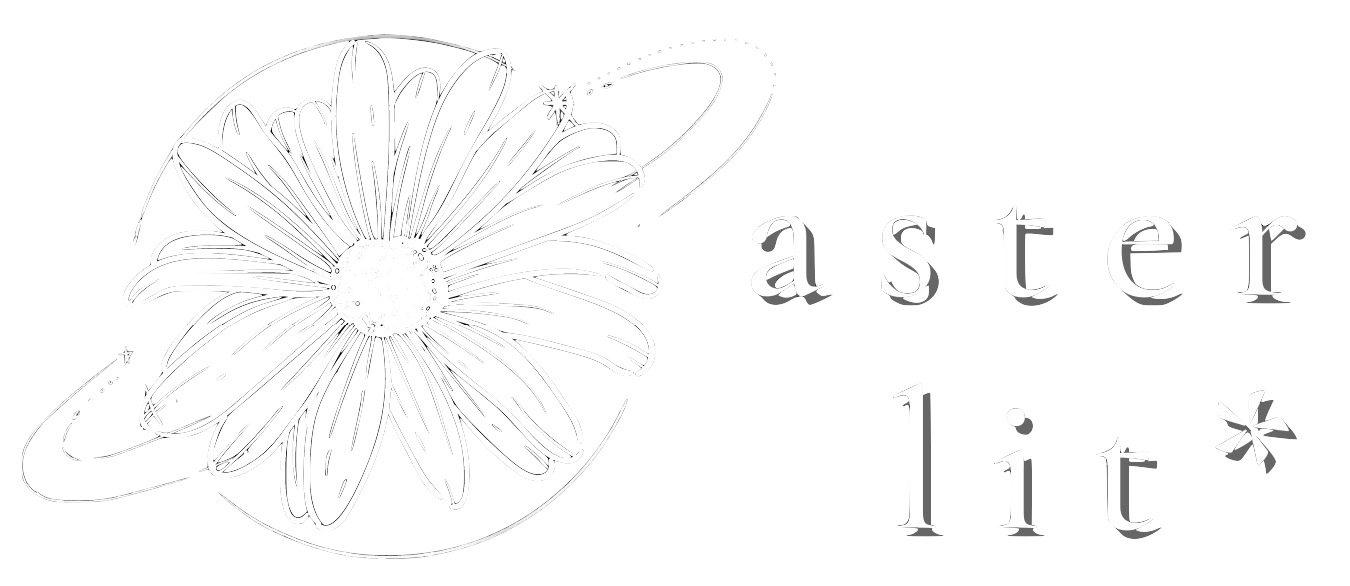
Aster Lit: translatability
Issue 12- Summer 2024
mind to heart, heart to mind
Joyce Lee
translation
trans·la·tion
/tranzˈlāSH(ə)n,tran(t)sˈlāSH(ə)n/
***
noun
A few weeks ago, I asked my mother what her favorite Korean word was. She said she didn’t know about Korean, but her favorite word in English was “cup.” I had sounded out the word in my mouth, in the Korean way she pronounced had it—cup, 컵, as a container for liquids.
Or at least, that was how I thought of a cup. This is how she thought of “cup”: 컵, as in what holds the warm milk that slips down your tired throat and settles sweetly into your stomach at the end of a twelve-hour day; 컵, as in the etched glasses that wine and green apple soda are both poured into whenever you want to feel fancy; 컵, as in the glass that holds your caffeinated liquid lifeline in the sharp sunlight of early morning.
At first glance, there are many things that cannot be accurately translated, whether it’s across languages or across people. The image that came to my mother when saying the word “cup” was much more visual and visceral than my literal and physical perception of a cup. People hold their experiences hugged tight to their bodies, and experiences are, in some ways, incommunicable.
Yet translation is instinctual. We translate experiences into emotion, emotion across people, people and emotion and experiences into words. This act of translation produces communication—rewriting or retelling something in a way that someone else can understand.
So to truly understand translation, we must think of it broadly. Translation isn’t just word to word or language to language, it’s experience to heart, heart to mind.
***
1. a bridge. made of popsicle sticks, for more reasons than one.
I always found it strange that there were boxes filled with just popsicle sticks. It made me wonder what came first, the popsicle or the mass produced sticks—what made people think, hey, this is the ideal arts and crafts staple for our kids! Nevertheless, when my teachers or camp counselors gave me these boxes of sticks, I would make bowls and bridges and towers out of popsicle sticks, pick out the purple ones and stack them in rainbows. I might even go as far as to say that they were one of, if not the most, memorable craft supplies of my childhood, and I’m sure some of the people reading this might resonate with that experience.
Around ten years after my popsicle stick escapades came to a close, when I was applying to this Aster Lit internship in the spring, I admittedly had no idea what to talk about in the application form when it came to my thoughts on translation and world literature. Even though English is not my first language, it’s grown into the only language that I’m currently fluent in. I wasn’t well-versed in the stories of other cultures, or even really of my own.
But as I spent time in each Aster Lit branch—editorial, social media, podcast, events—I realized that the idea of translation didn’t apply solely to the understanding of world literature, as I had originally interpreted it. Translation is more about form than it is about language itself. Written and spoken language communicate ideas in different ways, as do visual designs and multimedia presentations. It’s like giving four kids a bunch of popsicle sticks and telling them to build a beautiful bridge. Each one is going to build it differently, but they’re all equally bridges. One could argue that they’re structurally different, but they all used the same fundamental popsicle sticks of emotion, human experience, and more to communicate this idea of beauty, or any other idea these unique bridges are created to convey.
An essay we read in the editorial branch called “Notes On Homeland” by Daniel Liu examines the poem “Cha” by Stephanie Chang, which pieces ideas about heritage and homeland and heartbreak together through visceral descriptions of her cultural foods and religious imagery.
The individual images strike the heart of a reader, but the poem altogether is what moves it, because the completed piece combines her pain, her homeland, her love into a message that surpasses each fundamental aspect—popsicle stick, if you will—individually.
***
2. a plea with society to cross these bridges.
Not everyone wants to experience translation, or use translation to understand the experiences of others. One of the clear examples of this is historical prejudice and discrimination against minority groups—most who held this prejudice had no desire to understand others.
As Liu points out, there’s an otherness or alienation that often comes with the attempt to tell the story of homeland—that the idea ingrained within the publishing industry that immigrant stories must be digestible to a Western audience ends up shaping which kinds of stories are deemed meaningful and authentic.
But people still tell their stories—through words, art especially—because they have a desire to translate their own human experience into a format that another human with a different human experience can, if not relate to, at least see and feel and understand. Whether it’s about their cultural identities or some exploration of self, artists often reveal pieces of themselves, in vulnerability, through their work. So this act of translation, in addition to its aspect of self expression, is also an act of putting oneself out in the world in hopes of someone else viewing it and hoping that they gain understanding without a dependency on relatability to find it important.
From my mother’s cup to the popsicle sticks we stacked as children one by one, our experiences and emotions and words and hearts are what highlight the beauty and gruesomeness of life alike. Translation, whether it’s of words or experiences or emotions or heart, bridges humans together.
